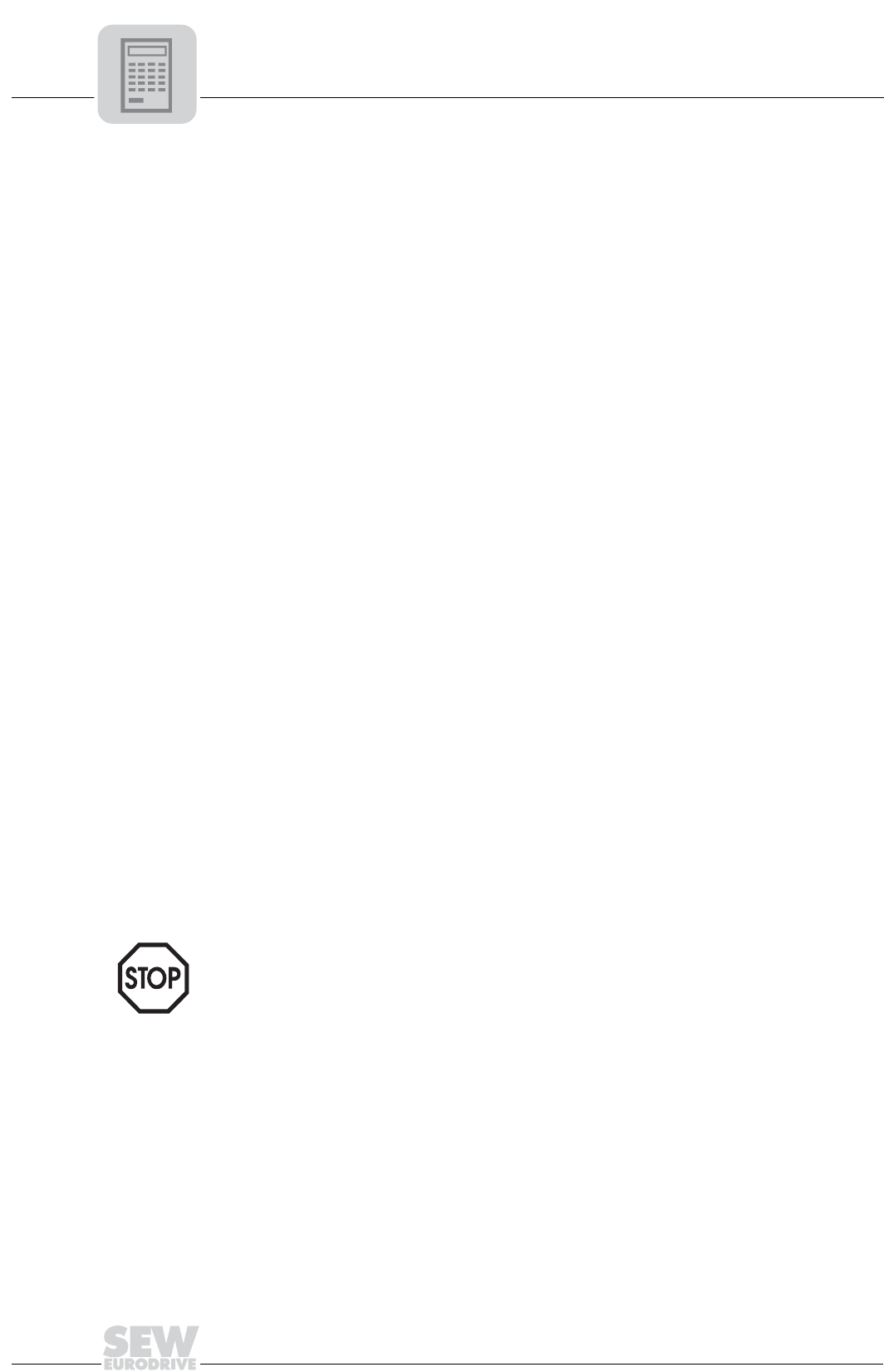Technical data

5
44
Manual – Gear Units and Gearmotors
Efficiency of gear units
Project Planning for Gear Units
5 Project Planning for Gear Units
5.1 Efficiency of gear units
General
information
The efficiency of gear units is mainly determined by the gearing and bearing friction.
Keep in mind that the starting efficiency of a gear unit is always less than its efficiency
at operating speed. This factor is especially pronounced in the case of helical-worm and
Spiroplan
®
right-angle gearmotors.
R, F, K gear units The efficiency of helical, parallel shaft and helical-bevel gear units varies with the
number of gear stages, between 94 % (3-stage) and 98 % (1-stage).
S and W gear
units
The gearing in helical-worm and Spiroplan
®
gear units produces a high proportion of
sliding friction. As a result, these gear units have higher gearing losses than R, F or K
gear units and thus be less efficient.
The efficiency depends on the following factors:
• Gear ratio of the helical-worm or Spiroplan
®
stage
• Input speed
• Gear unit temperature
Helical-worm gear units from SEW-EURODRIVE are helical gear/worm combinations
that are significantly more efficient than all worm type gear units. The efficiency may
reach η < 0.5 if the helical-worm or Spiroplan
®
stage has a very high ratio.
Self-locking Back-driving torques on helical-worm or Spiroplan
®
gear units produce an efficiency of
η’ = 2 - 1/η, which is significantly less favorable than the forward efficiency η. The
helical-worm or Spiroplan
®
gear unit is self-locking if the forward efficiency η ≤ 0.5.
Some Spiroplan
®
gear units are also dynamically self-locking. Contact SEW-
EURODRIVE if you wish to make technical use of the braking effect of self-locking
characteristics.
Do not use the self-locking effect of helical-worm and Spiroplan
®
gear units as sole
safety function for hoist or incline applications.










